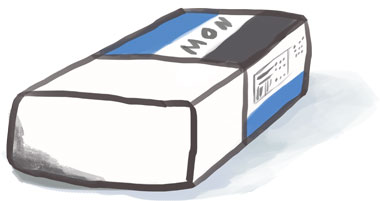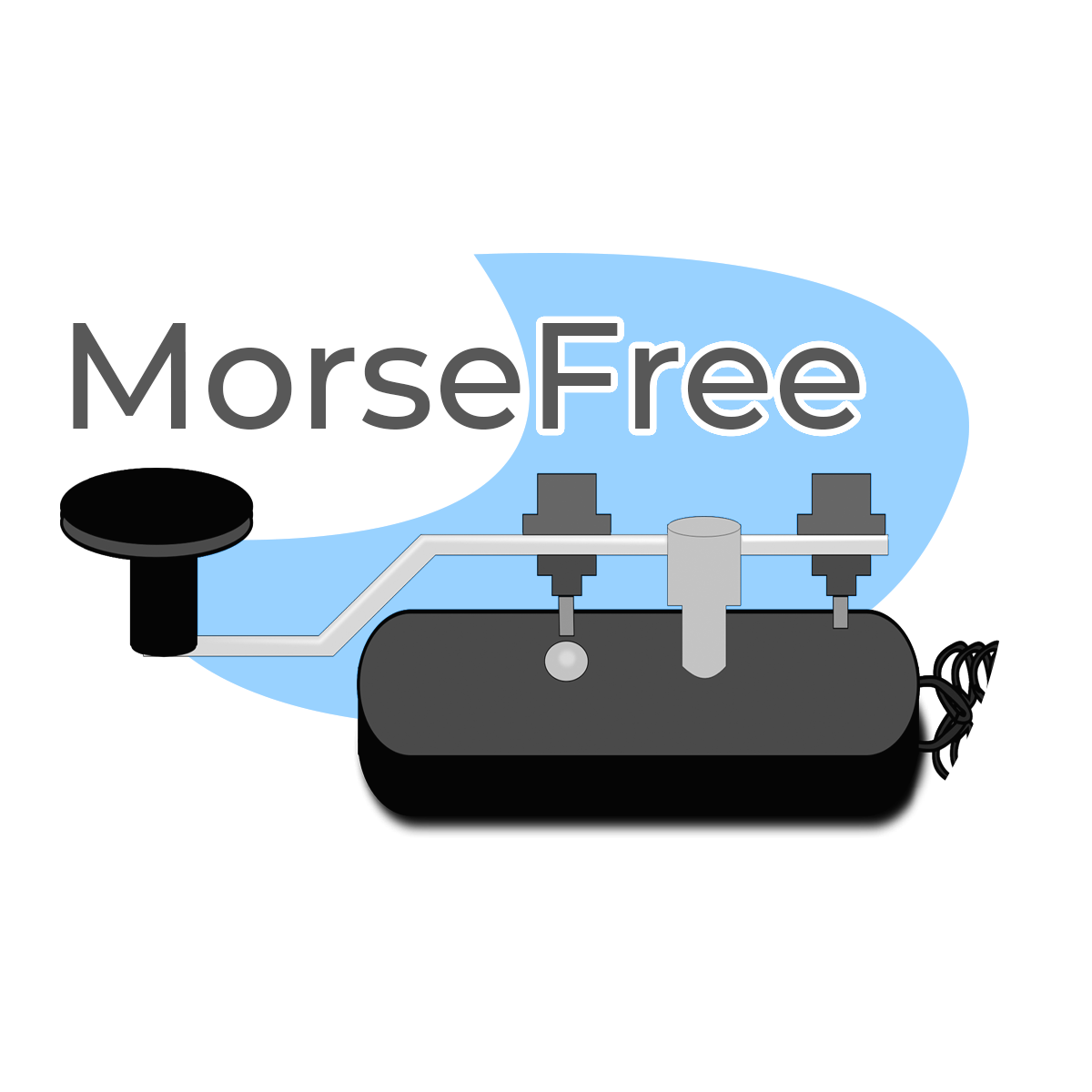 Headphones
Headphones
 Pen & Paper
Pen & Paper

Morse Code Lessons:
Complete each lesson to unlock the next. We use cookies only to save your progress and for anonymous usage statistics.
If these lessons have been helpful, that's the best thanks I could receive. Should you wish to support my training lessons and the upkeep of this site, a donation & share box is below. Feel free to reach out at [email protected] to chat about HAM Radio or suggest improvements!
Share this Morse Code Training:
Complete Chart of Morse Code Characters with Audio
Tap each letter to play the code. If you are new to Morse Code, please use lessons above to learn from your instructor, W5RCF.
Each dot is a "dit", where each bar is a "da"
Letters:


























Official code images of the International Telecommunication Union
Numbers:










Official code images of the International Telecommunication Union
Punctuation:




Modified images - Base: International Telecommunication Union
List of commonly used Morse Code Abbreviations & Shorthand
Tap each abbreviation to play the code.
ES
And
SN
Soon
UR
Your
GL
Good Luck
GUD
Good
CPY
Copy
SND
Send
PSE
Please
AGN
Again
(Send again. For example, SND AGN PSE )
TNX
Thank you
MSG
Message
WX
Weather
HVY
Heavy
DEGS
Degrees
(designate C° of F°)
FB
Fine Business
(Good, Thank you)
CUL
See You Later
GB
Good Bye
YL
Young Lady
XYL
X Young Lady (Wife)
OM
Old Man
(Complimentary Amateur Radio term used when sending to a male operator)
LID
A rude individual who may be interfering with your QSO
73
Best wishes
88
Love and kisses
(Typical ending when OM closes with a YL in place of 73)
SOS
HELP, Emergency, I need immediate assistance or rescue!
EEEEEEEE
(8 or more E's sent fast) I made a mistake. I'll try sending again.
RST
Signal Report
Readability
- 1-unreadable
- 2- barely readable
- 3-readable but difficult to copy
- 4-readable
- 5-strong signal solid copy
Strength
- 1-faint
- 2-Very weak
- 3-weak
- 4-Fair
- 5-fairly good
- 6-good
- 7-moderately strong
- 8-Strong
- 9-extremely strong
- Note: 9 would is a signal strength of S9 or greater
Tone
- 1-hissing
- 2-Rough, harsh AC sound
- 3-AC sound
- 4-very rough tone
- 5-rough tone
- 6-tone with hissing
- 7- tone with ripple
- 8-Near good tone, low ripple
- 9-Pure Tone
RST of 599 is the best report. Sometimes sent as 5 N N to shorten the length of the 9's
CW Q Codes
List of commonly used Codes for CW / HAM Radio
QTH
My location.
QRL
Is this frequency in use? Ask someone to stop interfering.
QRZ
Who is calling?
QSO
The message between stations.
QRU
I have nothing more for you.
QRT
Stop sending or designating the end of the QSO.
QSB
Your signal is fading.
QSL
I am acknowledging the receipt of this QSO.
QRQ
Please send faster.
QRS
Please send slower.
QSY
Changing to a different Frequency.
QRM
Interfering signals or noise.
QSK
I can hear your signal between transmitted characters so you can break in anytime (Break-in mode).
QRX
Standby or I will call you later specifying time and frequency.
QRP
Low power station or use to ask for lower power.
QRO
Increase power.
QRN
Static (lightning or electrical arcing) causing problems receiving.
QST
General call to all Radio Amateurs (Typical ARRL messages).
PREFACE
During my very first CW QSO (Morse Code Contact) in the 50's, I wrote down what I was going to send. I then wrote down what the other person sent. Then I had to take time to read it. I then had to write down what I was going to reply with. It was a very long QSO.
After many QSO's I began sending by memory and wrote down only what I needed to remember (such as their name, address etc.)
I now send what I want to say in sentences and send/receive words.
This takes time to develop, but I know if you stick with my Morse Code training, and get on the air, you can do the same (easier & faster than my first contacts.)
This is when it really becomes fun.
My only two learned languages are English and Morse Code.
W5RCF CREDENTIALS
My Amateur Radio licensing history:| Class | WPM | Call Sign | Year |
|---|---|---|---|
| Novice | 5 | KN9YZS | 1957 |
| Technician | 5 | K9YZS | 1959 |
| General | 13 | K9YZS | 1962 |
| Extra | 20 | KN9K | 1966 |
| Extra | W5RCF | 1999 |
LESSON INTRODUCTION
Students who learned with this Morse Code training course were fellow employees at AT&T Bell Telephone Laboratories in Indianapolis Indiana, fellow students at the Fort Wayne Indiana-Purdue University campus, and many other individuals.
CW has been my preferred operating mode 80% of my many years on the air. Let's have some fun and learn a new language!
This Morse training method is one that I have used for many years. It has produced many Amateur Radio operators during a time when CW was a requirement.
It uses 13 WPM characters to help train you to hear the sounds and cadences of each letter but sent at approximately 5 WPM spacing, perfect for beginners and intermediates.
This course will prepare you to hear moderate speeds of CW characters to help you develop a speed that can be used on the air with confidence.
I recommend not viewing the lesson printout during the audible practice.
Repeat each lesson as many times as you need until you achieve good copy before starting the next lesson.
Once you have completed each lesson I recommend you use a code oscillator and key of your choice to practice sending each provided printed lesson. This will greatly enhance the development of your CW skill.
Each new letter combination in each successive lesson introduces you to the sound of new characters. The lesson then may be selected and played.
I find writing is best when first learning.
Have fun and I hope to hear you on the air sending your new language (CW).
LESSON 1:
LETTERS "E I S H"
Each dot is a "dit", where each bar is a "da"




Official code images of the International Telecommunication Union
Instructions:
Writing is how you retain the most memory.
- Play the audio and write down the letters you hear.
- Then click "Reveal" to show the correct message.
- (Please finish entire lesson to save progress)
NOTE: Each Group / Sentence ends with a period ( . _ . _ . _ ) and multiple periods at the end of the last group.
EISH EISH .
HSIE IHSE EHIS SHE I HI HIS SISSH .
SHE IS HE HE IS I HIS HISS SEE .
ES ES I HI HI HI HI SSSHH EEIHS .
EIESH HHEIS SSIHE EHHI
SHISIS SSIIH . . . . . .
Great Job!
Click the Save & Continue button to save your progress and move on to the next lesson.
 Are you sure you want to clear your MoresFree lesson history?
Are you sure you want to clear your MoresFree lesson history?








